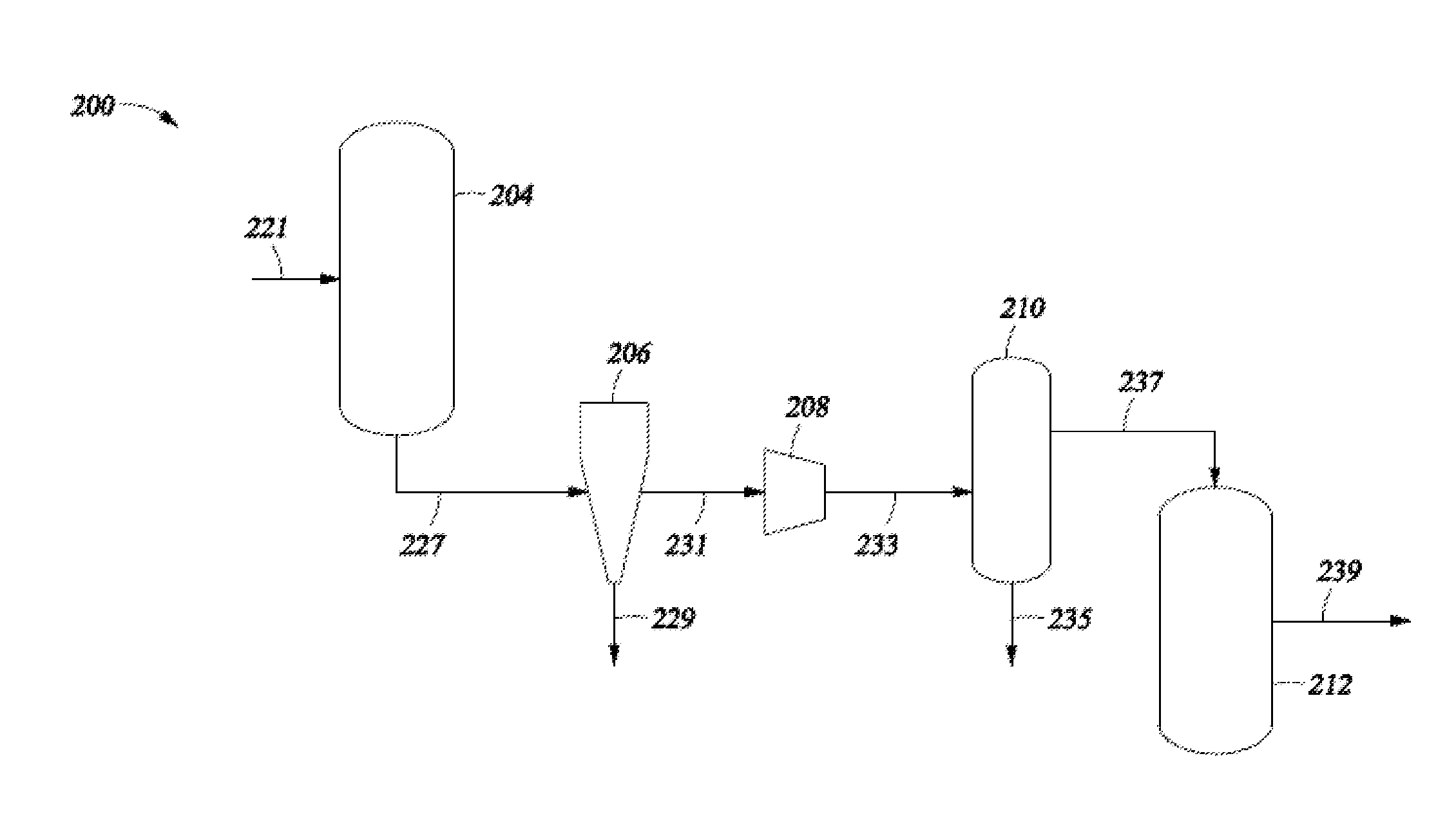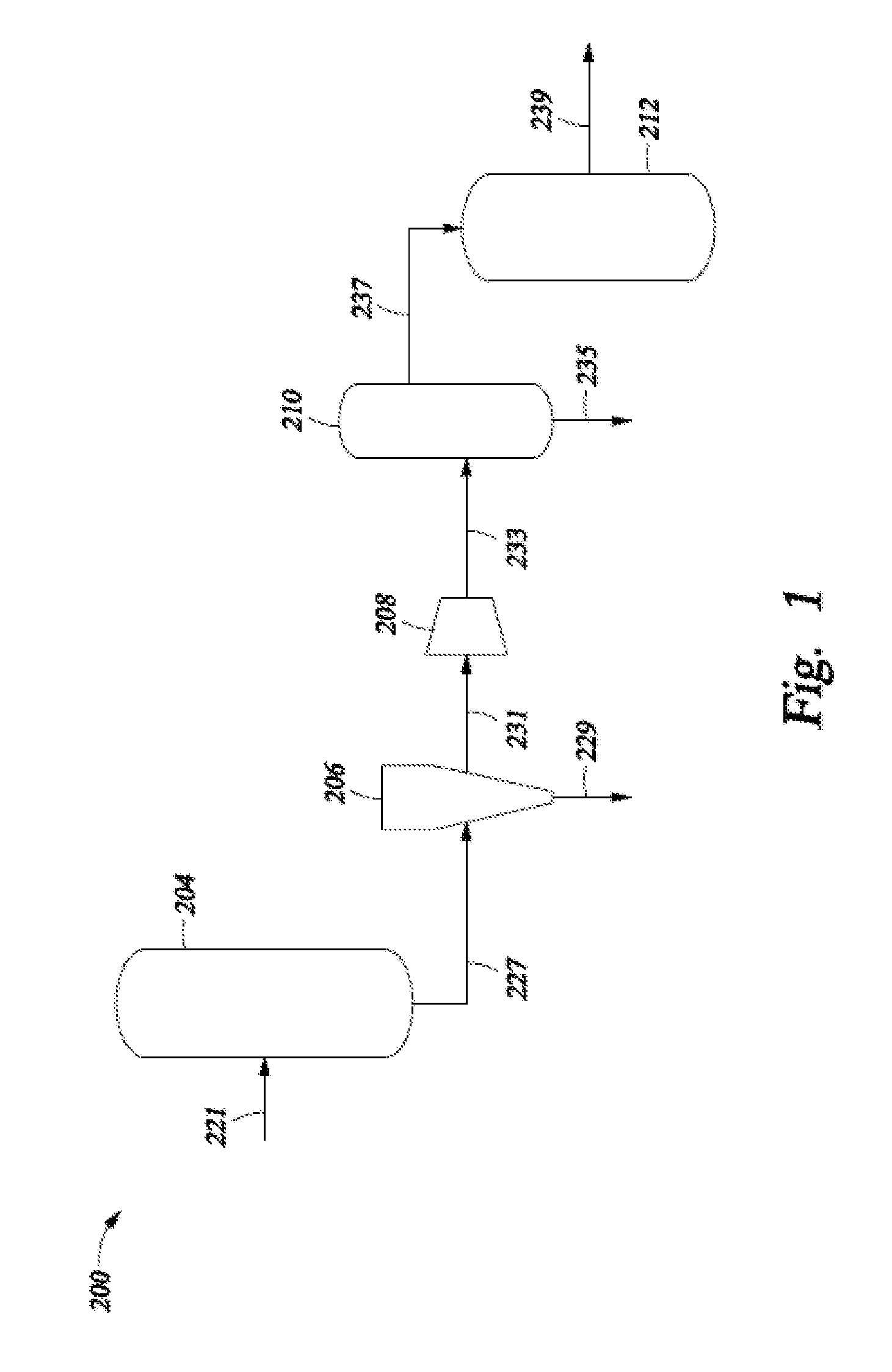Selective Hydrogenation of Alkynyl-Containing Compounds
- Summary
- Abstract
- Description
- Claims
- Application Information
AI Technical Summary
Benefits of technology
Problems solved by technology
Method used
Image
Examples
embodiment 1
2. The method of embodiment 1, wherein the heat is produced at operating conditions sufficient to yield a catalyst heat release rate ≧1.8 MJ / hr / cc of hydrogenation catalyst.
3. The method of any one of embodiments 1 to 2, wherein the feed stream flows through the conduit at a pressure drop of ≦69 kPa per meter of conduit.
4. The method of any one of embodiments 1 to 3, wherein the conduit has a cross sectional area of less than or equal to 50 mm2
5. The method of any one of embodiments 1 to 4, wherein the conduit is in a microchannel converter.
embodiment 5
6. The method of embodiment 5, wherein the recovering comprises:
passing the heat transfer fluid through at least one of a plurality of conduits in the microchannel converter;
heating the heat transfer fluid via indirect heat transfer; and removing the heat transfer fluid from the microchannel converter.
embodiment 6
7. The method of embodiment 6, wherein the indirect heat exchange is through a material having a thermal conductivity of ≧10 W / m-C at operating conditions.
8. The method of any one of embodiments 1 to 7, wherein the hydrogenation catalyst is disposed on an inner wall of the conduit.
PUM
| Property | Measurement | Unit |
|---|---|---|
| Temperature | aaaaa | aaaaa |
| Temperature | aaaaa | aaaaa |
| Fraction | aaaaa | aaaaa |
Abstract
Description
Claims
Application Information
 Login to View More
Login to View More - R&D
- Intellectual Property
- Life Sciences
- Materials
- Tech Scout
- Unparalleled Data Quality
- Higher Quality Content
- 60% Fewer Hallucinations
Browse by: Latest US Patents, China's latest patents, Technical Efficacy Thesaurus, Application Domain, Technology Topic, Popular Technical Reports.
© 2025 PatSnap. All rights reserved.Legal|Privacy policy|Modern Slavery Act Transparency Statement|Sitemap|About US| Contact US: help@patsnap.com



